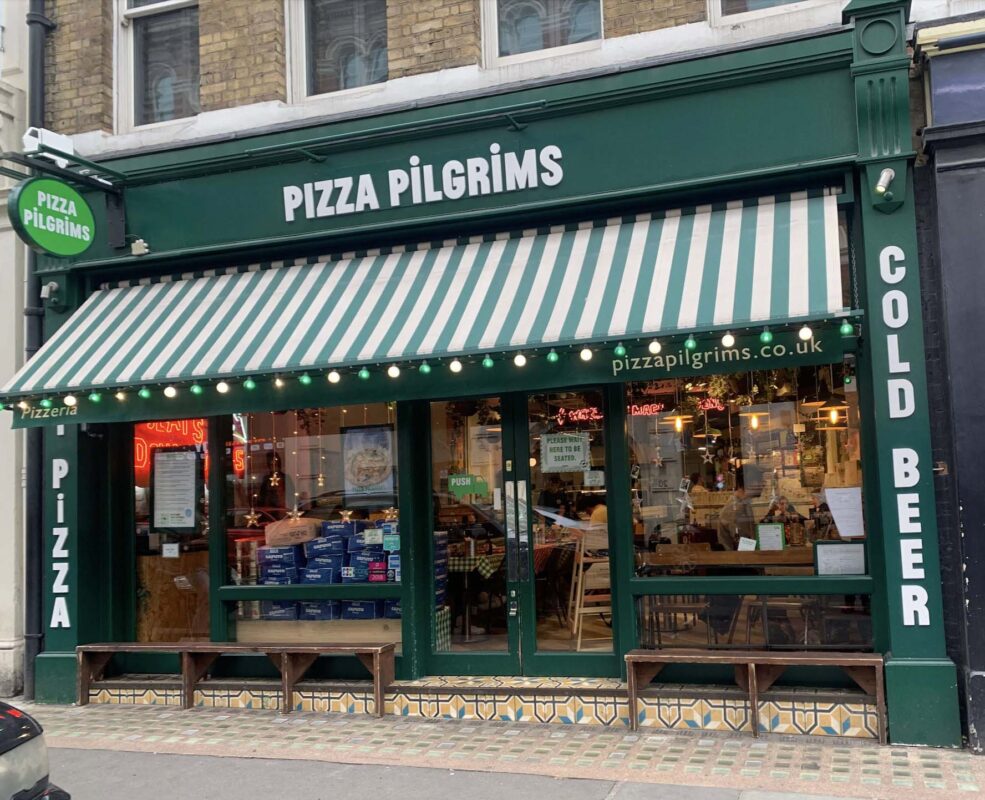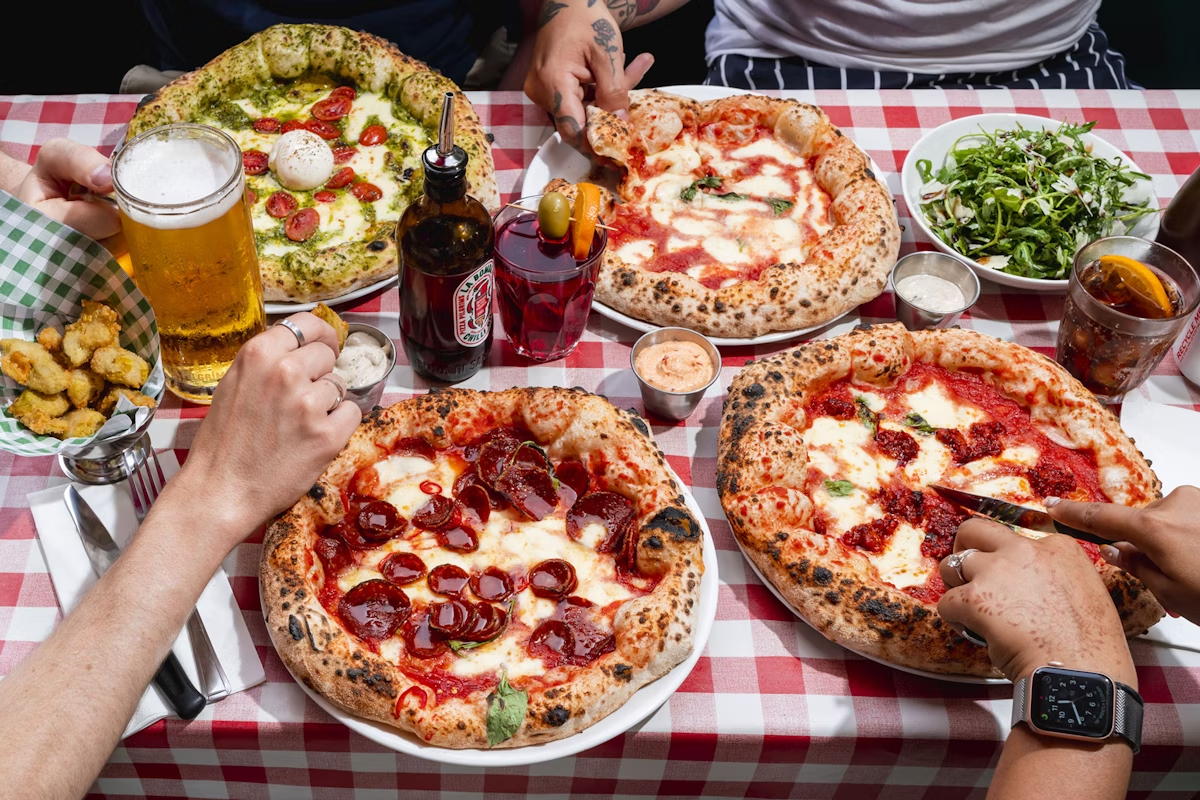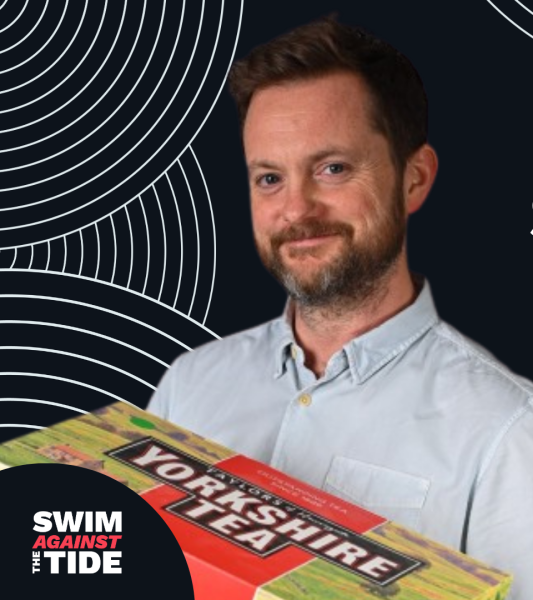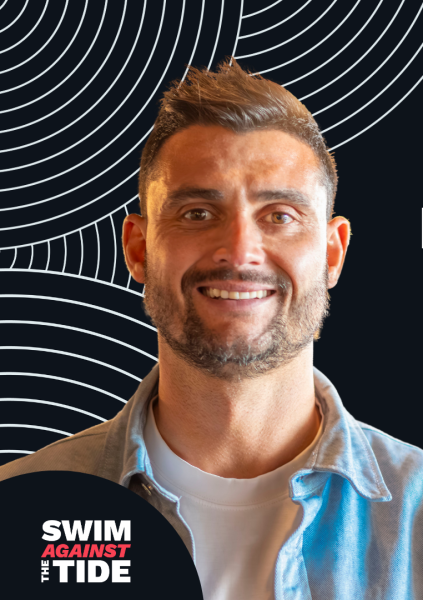🎧 Listen to the episode on YouTube 🎧
I’ve met a lot of founders on Swim Against The Tide, but few carry the mix of joy, craft and commercial smarts that Thom Elliot does. In our chat, Thom walked me through the tuk-tuk beginnings, the Napoli obsession, and the “better before bigger” mindset that’s powered Pizza Pilgrims from a market stall to a beloved challenger brand. Here are my biggest takeaways; from a host who cares about brand, marketing and growth just as much as the pizza.

1) “Better before bigger” is a growth strategy, not a slogan
Thom’s mantra is simple: make the product unarguably great, then scale the experience around it. That means saying no to shortcuts, resisting vanity expansion, and endlessly tuning the basics: dough, heat, time, service. In marketing terms, it’s radical focus: fewer messages, more meaning. If you’re building a challenger brand, you win on depth before breadth (and your media plan will thank you later.)
2) Story > spend
You can’t outspend incumbents, so out-story them. Thom’s origin story is cinematic: two brothers, a slow Piaggio Ape, and a pilgrimage through Italy to learn pizza the right way. It’s distinctive, re-tell-able and true, which makes it brand rocket fuel. Every touchpoint, from menu copy to socials to team briefings, should pull from that same narrative spine. Your story is an always-on acquisition channel priced in authenticity, not CPM.
3) Product is marketing (and vice versa)
The best marketing Pizza Pilgrims does is the pizza. When the core product is remarkable, every table becomes a media placement and every guest becomes an influencer. That doesn’t eliminate performance media; it makes it efficient. Great creative + great product experience = compounding growth. If you’re struggling with CAC, fix the “wow” before you tweak the bid strategy.
4) Create experiences people want to talk about
Thom leans into theatre: the feel of Napoli, the warmth of the team, the ritual of the dough. Restaurants are stagecraft and so are brands. Ask: what’s the photographable moment? What’s the line people quote? What’s the in-store (or in-product) beat that earns a share? Word-of-mouth is still the highest-ROAS channel on Earth, if you design for it.
5) Values that travel: Napoli roots and B Corp proof
Two anchors kept coming up; connection to Naples (ingredients, technique, spirit) and a public commitment to doing business the right way. Pizza Pilgrims baked those values into operations (sourcing, craft) and then proved it by achieving B Corp certification. In brand terms, that’s signal over noise: cultural roots you can taste, and impact claims you can verify. If you talk “purpose,” bring receipts.
6) Team, not “family”
Thom’s language around people is refreshingly clear: this is a team, high trust, high standards, shared goals. That framing unlocks better hiring (values + capability), cleaner feedback, and healthier culture at scale. For marketing leaders, it’s a reminder: brand lives or dies in the hands of the people delivering it. Your internal comms is your most important channel.
7) Challenger brands win with constraint creativity
Limited budgets forced early-stage scrappiness: market stalls, clever formats, and product-led buzz. Constraint breeds distinctiveness. When you can’t pay for awareness, you engineer memorability: a tuk-tuk, a pilgrimage, a pizza kit in lockdown, a Napoli-first menu. Tight constraints + strong point of view = distinctive brand codes that compound over time.

So, what’s the playbook?
- Pick one thing to be famous for (for Thom, authentic Neapolitan pizza) and pour disproportionate effort there.
- Codify the origin story and make it visible in product, place, people and platforms.
- Design for shareability – a moment, a line, a ritual – so WOM becomes your growth engine.
- Prove your promises with third-party validation (like B Corp) and operational reality.
- Treat culture like a product: hire for values and skill, then coach like a team, not a family.
- Grow when the product begs for it, “better before bigger” as a KPI, not a poster.
If you care about brand, marketing and growth, Thom’s journey is a masterclass in building something that scales because it’s good, not loud. Challenger brands don’t need to shout; they need to matter. Do the hard, quiet work on the product, honour the story that only you can tell, and let your customers carry the message further than any ad budget ever could.
SEO note: brand strategy, marketing, challenger brand growth, Napoli-inspired product, B Corp restaurants, founder storytelling, product-led marketing.


